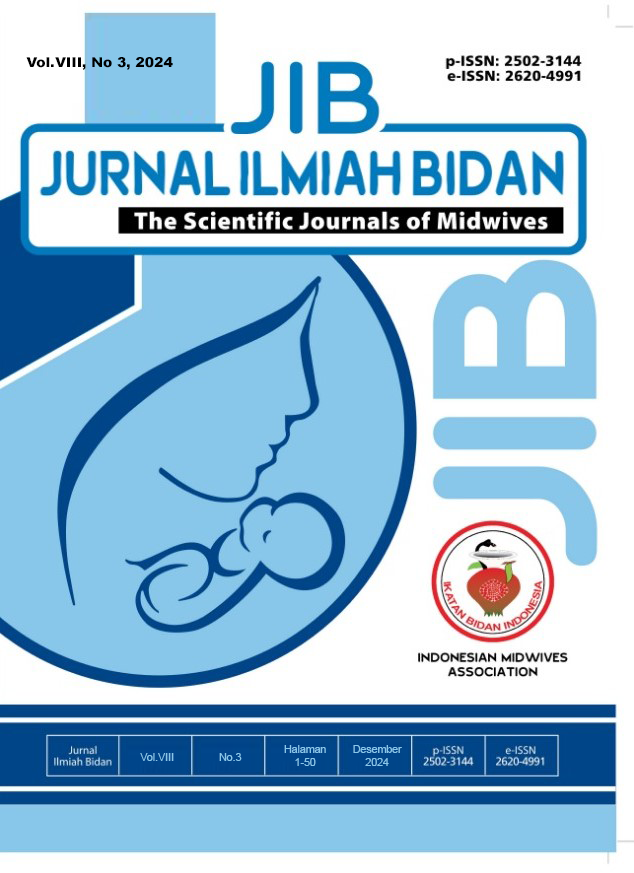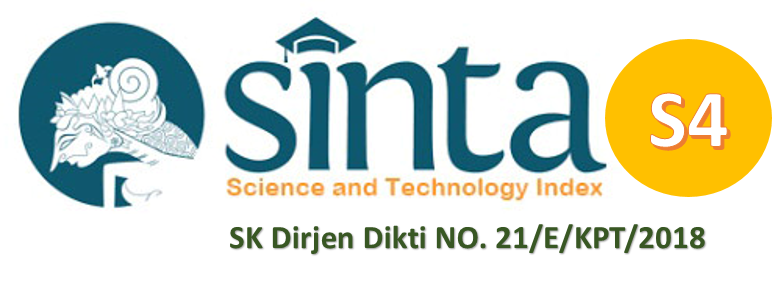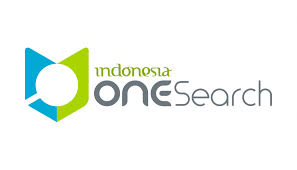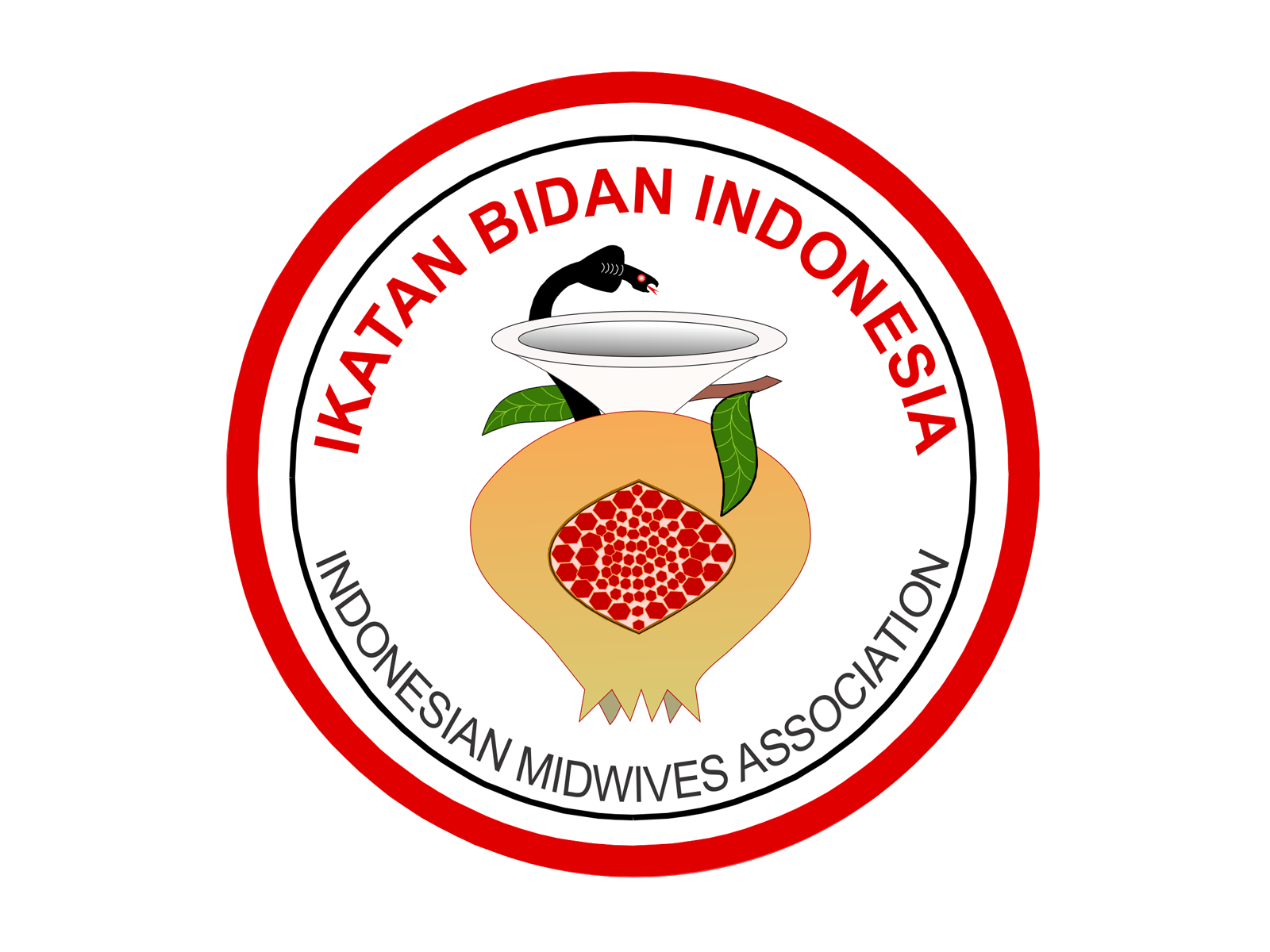HUBUNGAN PERILAKU PERSONAL HYGIENE DENGAN KEJADIAN KEPUTIHAN PADA WANITA PENYANDANG DISABILITAS DI HWDI SLEMAN
Abstrak
Abstrak
Kebutuhan dasar kesehatan bagi wanita penyandang disabilitas yaitu mampu melakukan kegiatan perawatan dirinya sendiri termasuk organ genitalia yang dikenal dengan personal hygiene. Personal hygiene merupakan perawatan kebersihan diri untuk mencegah infeksi yang disebabkan oleh bakteri terutama organ genitalia yang rentan terhadap infeksi. Penelitian ini bertujuan untuk mengetahui hubungan perilaku personal hygiene dengan kejadian keputihan pada wanita penyandang disabilitas di HWDI Sleman. Metode dalam penelitian ini berupa korelasional dengan pendekatan cross sectional. Responden penelitian terdiri dari 40 anggota HWDI Sleman dan diambil dengan teknik purposive sampling dengan kriteria inklusi mengalami keputihan dalam 6 bulan terakhir. Pengumpulan data menggunakan kuesioner dan dilakukan uji chi-square. Hasil penelitian ini didapatkan sebagian besar responden memiliki perilaku personal hygiene baik sebesar 50% dan kejadian keputihan sebagian besar mengalami keputihan fisiologis sebesar 50%. Analisis uji chi square diperoleh p=0,003 yang berarti p<0,05 artinya ada hubungan yang signifikan mengenai perilaku personal hygiene dengan kejadian keputihan pada wanita penyandang disabilitas.
Kata kunci : Personal hygiene, keputihan, wanita disabilitas
Referensi
2. Citra, Diana. (2023). Faktor Yang Berhubungan Dengan Personal Hygiene Pada Penyandang Disabilitas Di Panti Sosial Bina Grahita Harapan Ibu Padang Tahun 2023. Skripsi. Universitas Andalas, Sumatra Barat.
3. Salamah, U. Kusumo, D, W, and Mulyana, D, N. (2020). Faktor Perilaku Meningkatkan Resiko Keputihan. Jurnal Kebidanan. Vol 9, No 1. Hal 7-14.
4. Sari, Brahmawido, P. Negara, I. and Susanta, I. (2022). Kemandirian Personal Hygiene Pada Disabilitas Di Slb D Ypac Bali. Jurnal Riset Kesehatan Nasional 6(1): 31–35. doi:10.37294/jrkn.v6i1.345.
5. Nurasa, Indri, and Hidayati, T. (2019). Personal Hygiene Pada Orang Dengan Dan Tanpa Disabilitas Literature Review. Bhamada: Jurnal Ilmu dan Teknologi Kesehatan (E-Journal) 10(2): 15.
6. Oktavia, R. Andriani, L, and Febria, C. (2022). Gambaran Tingkat Pengetahuan Tentang Kesehatan Reproduksi Dan Komunikasi Keluarga Mengenai Perilaku Seksual Pada Remaja Penyandang Disabilitas Di Komunitas Umbrela Disability Project (UDP) Kota Bukittinggi. Jurnal Ners. Vol. 6 No. 1 Hal 46 – 51.
7. Silaban, Fitrinelda, V. Silalahi, K. and Saragih, E. (2020). Pemanfaatan Personal Hygiene Untuk Menurunkan Tingkat Kejadian Keputihan. Jurnal Ilmu Keperawatan 8: 1.
8. Sani, N., Kusuma, Y., & Hidayati, S. (2020). Knowledge and hygiene practices of adolescent women regarding reproductive health: A study in secondary schools. Journal of Public Health Education, 21(2), 85-92.
9. Wulandari, F. (2021). The impact of education on personal hygiene and reproductive health in housewives. Journal of Health Education and Community, 28(3), 153-160.
10. Pratiwi, S. (2020). Challenges in reproductive health care for women with disabilities: A review of hygiene practices. Journal of Disability Health, 22(4), 273-280.
11. Haryono, J. Koesbardiati, T. and Mas’udah, S. (2020). Kebijakan Pelayanan Kesehatan Reproduksi Bagi Perempuan Penyandang Disabilitas Dalam Rangka Pencegahan Kekerasan Seksual Reproduction Health Service Policy for Disabled Females to Prevent Sexual Abuse Pendahuluan Permasalahan Seksualitas Dan Kesehatan Reproduksi.” Masyarakat, Kebudayaan dan Politik 28(2): 80–93.Anggraini, S. (2018). Hubungan personal hygiene dengan kejadian keputihan pada wanita mahasiswa di Universitas Airlangga. Jurnal Kesehatan Masyarakat, 10(2), 45-51.
12. Cahyaningtyas, A. Nanggolan, S. and Simanjuntak, T. (2021). Hubungan Antara Pengetahuan, Sikap Dan Praktik Personal Hygiene Organ Genitalia Eksterna Terhadap Kejadian Keputihan Patologis. Majalah Kedokteran UKI 36(2): 44–48. doi:10.33541/mk.v36i2.3091.
13. Maulida. (2022). Gambaran Perilaku Personal Hygiene Genitalia Pada Wanita Pekerja Pabrik Di Pt. Rodeo Prima Jaya Semarang. i–61.
14. Pratika, N. (2021). Hubungan Antara Perilaku Personal Hygiene Terhadap Kejadian Keputihan Pada Remaja Putri Di Desa Ketewel. Institut Teknologi Dan Kesehatan Bali. Skripsi. Denpasar Kurniawati, E. (2021). The relationship between personal hygiene practices and abnormal vaginal discharge among women. Journal of Women's Health, 28(4), 335-340
15. Nafikadini, Iken, and Paramarta, D. (2021). Pola Asuh Ibu Dalam Kebersihan Organ Reproduksi Selama Menstruasi Pada Remaja Tunagrahita. Jurnal Kesehatan 8(3): 208–19. doi:10.25047/j-kes.v8i3.193.
16. Sulistyawati, A. (2020). Hubungan jenis alat kontrasepsi dengan gangguan kesehatan resproduksi. Jurnal Kesehatan Madani Medika. Vol 9 No 2.
17. Setiawati, A. (2019). Faktor-faktor yang mempengaruhi kejadian keputihan pada wanita di daerah pedesaan. Skripsi. Universitas Gadjah Mada.
18. Yuni, H. Masnarivan, Y. Shalsabila, A. and Citra, D. (2020). “Hubungan Tingkat Pengetahuan Dengan Perilaku Personal Hygiene Pada Penyandang DIsabilitas DI Panti Sosial Bina Grahita Padang.” Jurnal Forum Kesehatan: Media Publikasi Kesehatan Ilmiah.
Please find the rights and licenses in Jurnal Ilmiah Bidan (JIB). By submitting the article/manuscript of the article, the author(s) agree with this policy. No specific document sign-off is required.
1. License
The non-commercial use of the article will be governed by the Creative Commons Attribution license as currently displayed on Creative Commons Attribution-NonCommercial-ShareAlike 4.0 International License.
2. Author(s)' Warranties
The author warrants that the article is original, written by stated author(s), has not been published before, contains no unlawful statements, does not infringe the rights of others, is subject to copyright that is vested exclusively in the author and free of any third party rights, and that any necessary written permissions to quote from other sources have been obtained by the author(s).
3. User/Public Rights
JIB's spirit is to disseminate articles published are as free as possible. Under the Creative Commons license, JIB permits users to copy, distribute, display, and perform the work for non-commercial purposes only. Users will also need to attribute authors and JIB on distributing works in the journal and other media of publications. Unless otherwise stated, the authors are public entities as soon as their articles got published.
4. Rights of Authors
Authors retain all their rights to the published works, such as (but not limited to) the following rights;
- Copyright and other proprietary rights relating to the article, such as patent rights,
- The right to use the substance of the article in own future works, including lectures and books,
- The right to reproduce the article for own purposes,
- The right to self-archive the article (please read out deposit policy),
- The right to enter into separate, additional contractual arrangements for the non-exclusive distribution of the article's published version (e.g., post it to an institutional repository or publish it in a book), with an acknowledgment of its initial publication in this journal (Jurnal Ilmiah Bidan).
5. Co-Authorship
If the article was jointly prepared by more than one author, any authors submitting the manuscript warrants that he/she has been authorized by all co-authors to be agreed on this copyright and license notice (agreement) on their behalf, and agrees to inform his/her co-authors of the terms of this policy. JIB will not be held liable for anything that may arise due to the author(s) internal dispute. JIB will only communicate with the corresponding author.
6. Royalties
Being an open accessed journal and disseminating articles for free under the Creative Commons license term mentioned, author(s) aware that JIB entitles the author(s) to no royalties or other fees.
7. Miscellaneous
JIB will publish the article (or have it published) in the journal if the article’s editorial process is successfully completed. JIB's editors may modify the article to a style of punctuation, spelling, capitalization, referencing and usage that deems appropriate. The author acknowledges that the article may be published so that it will be publicly accessible and such access will be free of charge for the readers as mentioned in point 3.














